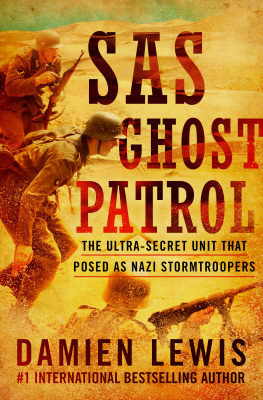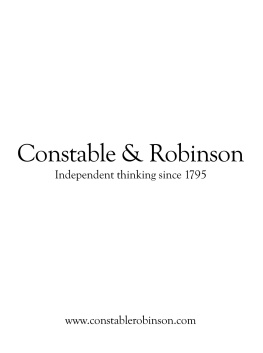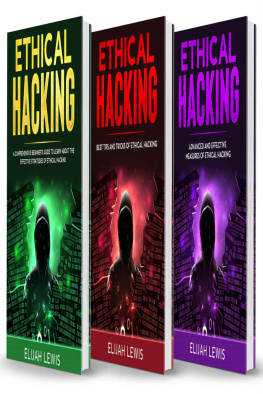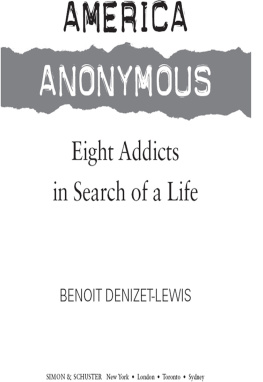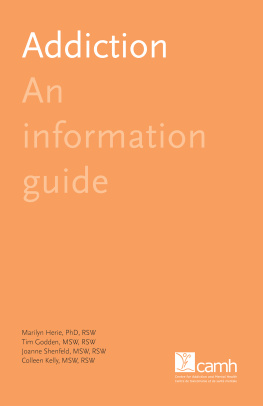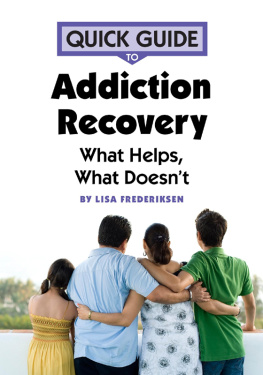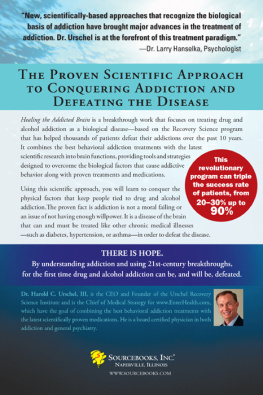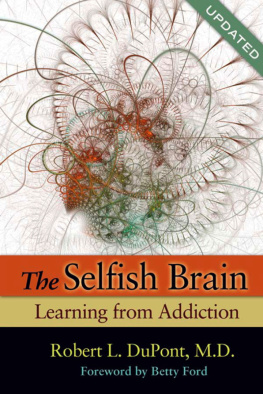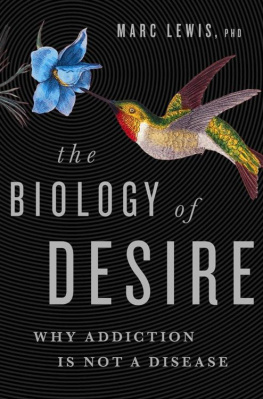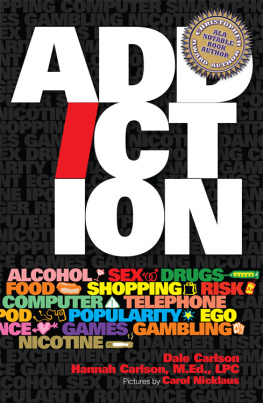THE BIOLOGY OF DESIRE

Copyright 2015 by Marc Lewis
Published in the United States by PublicAffairs,
A Member of the Perseus Books Group
All rights reserved.
Printed in the United States of America.
No part of this book may be reproduced in any manner whatsoever without written permission except in the case of brief quotations embodied in critical articles and reviews. For information, address PublicAffairs, 250 West 57th Street, 15th Floor, New York, NY 10107.
PublicAffairs books are available at special discounts for bulk purchases in the US by corporations, institutions, and other organizations. For more information, please contact the Special Markets Department at the Perseus Books Group, 2300 Chestnut Street, Suite 200, Philadelphia, PA 19103, call (800) 810-4145, ext. 5000, or e-mail .
Book design by Jeff Williams
A CIP catalog record is available for this book from the Library of Congress.
ISBN 978-1-61039-438-3 (e-book)
Library of Congress Control Number: 2015940383
First Edition
10 9 8 7 6 5 4 3 2 1
For the members of my blog community, who have generously shared their experiences and insights, and for the five who trusted me to tell their stories here
CONTENTS
Public attention has been riveted by the harm addicts cause themselves and those around them, more in the last few years than ever before. And the way we view addiction is changing, moulting, and perhaps advancing at the same time. Weve begun to separate our ideas about addiction from assumptions about moral failings. Were less likely to dismiss addicts as simply indulgent, spineless, lacking in willpower. It becomes harder to relegate addiction to the down-and-outers, the gaunt-faced youths who shuffle toward our cars at traffic lights. We see that addiction can spring up in anyones backyard. It attacks our politicians, our entertainers, our relatives, and often ourselves. Its become ubiquitous, expectable, like air pollution and cancer.
To explain addiction seems more important than ever before. And the first explanation that occurs to most people is that addiction is a disease. What else but a disease could strike anyone at any time, robbing them of their well-being, their self-control, and even their lives? Many esteemed public health organizations and doctors call it a disease. Rehabs, addiction counsellors, and twelve-step fellowships call it a disease. Research over the last twenty years has found indisputable evidence for changes in brain structure and function that parallel substance abuse. And genetic studies reveal heritable traits that predispose people to addiction. All this seems to clinch the definition of addiction as a diseasea physical disease. And that gives us hope, or at least forbearance, because the notion is sensible, comforting in its own way, and part of our shared reality. If addiction is a disease, then it should have a cause, a time course, and possibly a cure, or at least agreed-on methods of treatment. Which means we can hand it over to the professionals and follow their instructions.
But is addiction really a disease?
This book makes the case that it isnt. Addiction results, rather, from the motivated repetition of the same thoughts and behaviours until they become habitual. Thus, addiction developsits learnedbut its learned more deeply and often more quickly than most other habits, due to a narrowing tunnel of attention and attraction. A close look at the brain highlights the role of desire in this process. The neural circuitry of desire governs anticipation, focused attention, and behaviour. So the most attractive goals will be pursued repeatedly, while other goals lose their appeal, and that repetition (rather than the drugs, booze, or gambling) will change the brains wiring. As with other developing habits, this process is grounded in a neurochemical feedback loop thats present in all normal brains. But it cycles more persistently because of the frequent recurrence of desire and the shrinking range of what is desired. Addiction arises from the same feelings that bind lovers to each other and children to their parents. And it builds on the same cognitive mechanisms that get us to value short-term gains over long-term benefits. Addiction is unquestionably destructive, yet it is also uncannily normal: an inevitable feature of the basic human design. Thats what makes it so difficult to graspsocially, scientifically, and clinically.
I believe that the disease idea is wrong, and that its wrongness is compounded by a biased view of the neural dataand by doctors and scientists habit of ignoring the personal. Its an idea that can be replaced, not by shunning the biology of addiction but by examining it more closely, and then connecting it back to lived experience. Medical researchers are correct that the brain changes with addiction. But the way it changes has to do with learning and developmentnot disease. Addiction can therefore be seen as a developmental cascade, often foreshadowed by difficulties in childhood, always boosted by the narrowing of perspective with recurrent cycles of acquisition and loss. Like other developmental outcomes, addiction isnt easy to reverse, because it rides on the restructuring of the brain. Like other developmental outcomes, it arises from neural plasticity, but its net effect is a reduction of further plasticity, at least for a while. Addiction is a habit, which, like many other habits, gets entrenched through a decrease in self-control. Addiction is definitely bad news for the addict and all those within range. But the severe consequences of addiction dont make it a disease, any more than the consequences of violence make violence a disease, or the consequences of racism make racism a disease, or the folly of loving thy neighbours wife makes infidelity a disease. What they make it is a very bad habit.
Although this book uses scientific findings to build its case, it works through the testimony of ordinary people. I relate detailed biographical narratives of five very different people, each struggling with addiction, as the scaffolding on which brain science is introduced and interpreted. I have rendered these narratives in a literary style, including stream of consciousness and dialogue, but they are factually accurate, except for the use of pseudonyms and the inexact wording of some of the dialogue. Through these stories, I show what its like and how it feels when addiction takes hold, while explaining the neural changes underlying it. Theres no doubt that these changes mark a difficult passage in personality development. But I conclude each chapter on a positive note, following my contributors through their addictions to their growth beyond ita phase often termed recovery. And I provide the neuroscientific facts and concepts to help us understand how they get there. The many addicts who end up quitting do so uniquely and inventively, through effort and insight. Thus quitting is best seen as further development, not recovery from a disease.

Im a neuroscientist and a professor. Its my job to teach students whatever I know about the brain. Ive taught and done research on emotional development and the brain for most of my career. But after my first decade of lecturing, I began to sound stodgy and dull, even to myself. What was I missing? The brain is the foundation of our needs, our desires, our joy and suffering, our darkest moments and our capacity to overcome them. Why was it coming across as an anatomical jigsaw puzzle, a blueprint for a circuit board, a thicket of labels, boxes, and arrows? How could I convey the gut-wrenching reality of the brain as a motivational furnace? Even in graduate courses, students met my efforts with glassy stares and furious note taking. Look up! I wanted to shout. Look up from your notes and feel what your brain is doing. You can get this directly. Not from your notes. Just introspect a bit and youll discover that your brain is busily extending and revising a landscape of flitting thoughts, shocking associations, and childish impulses. Its not just an organ of rationality, as youve no doubt been taught; its also the biological engine of our striking irrationalityit has a dark side. How does
Next page


